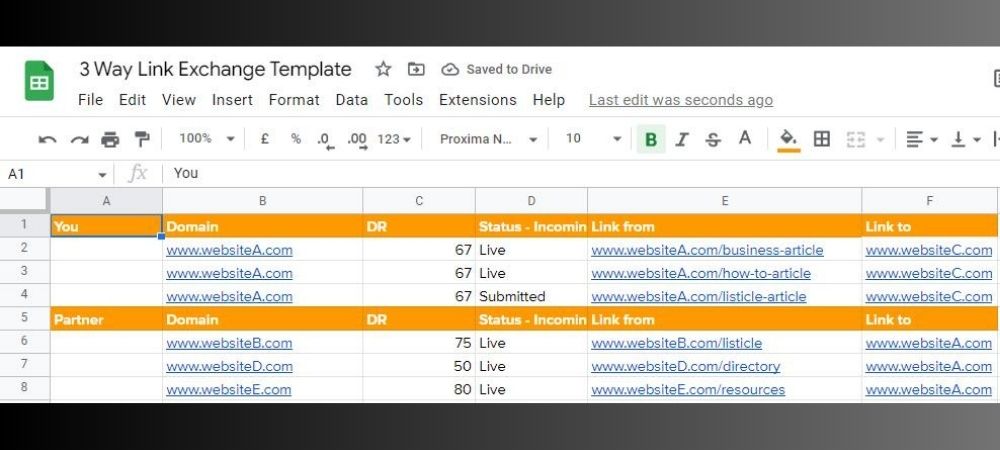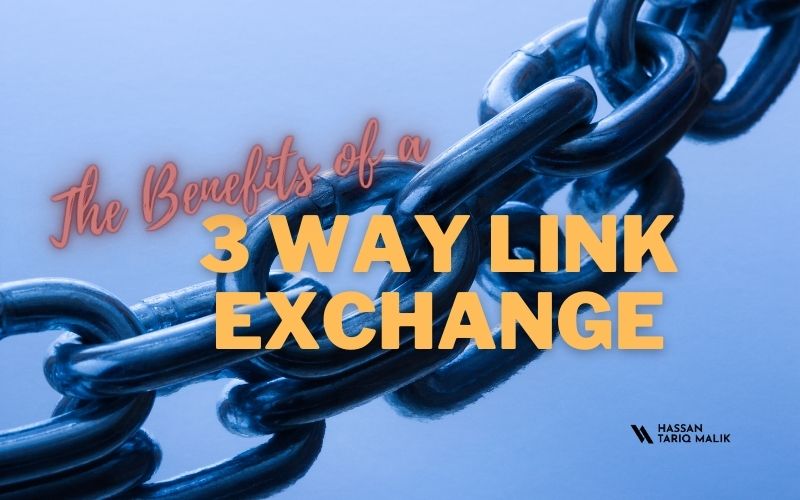In the ever-evolving world of search engine optimization (SEO), website owners are constantly on the lookout for effective strategies to boost their online presence and increase website traffic. One such strategy that has gained popularity in recent years is the 3-way link exchange. Understanding the intricacies and advantages of this technique can greatly benefit website owners by improving search engine rankings, driving traffic, and enhancing domain authority.
Understanding 3-Way Link Exchange
Before diving into the benefits, it is important to have a clear understanding of what a 3-way link exchange entails. In its simplest form, a 3-way link exchange is a mutually beneficial arrangement between three websites where each site provides a link to another site in the exchange. Instead of two websites exchanging links directly, the third website acts as a bridge, connecting the two sites indirectly.
Now, let’s look into the concept of a 3-way link exchange on a deeper level and explore its various aspects.
Defining 3-Way Link Exchange
To define a 3-way link exchange further, let’s imagine Website A, Website B, and Website C. Website A provides a link to Website B, Website B provides a link to Website C, and Website C, in turn, provides a link to Website A. This triangular reciprocal linking structure forms the basis of a 3-way link exchange.
By utilizing this strategy, website owners can take advantage of the fact that search engines value inbound links as an indicator of a website’s authority and relevance. This means that when a website receives links from other reputable sites, it signals to search engines that the website is trustworthy and valuable to users.

Furthermore, 3-way link exchanges can help websites increase their organic search rankings by improving their link profile. Search engines consider the quality and quantity of inbound links when determining a website’s position in search results. By participating in a 3-way link exchange, websites can expand their network of inbound links, thus enhancing their visibility and attracting more organic traffic.
The Mechanics of a 3-Way Link Exchange
The mechanics of a 3-way link exchange involve careful planning and coordination between the participating websites. It is crucial to ensure that the links are placed strategically within the content or navigation of each website to maximize visibility and search engine ranking benefits.
When implementing a 3-way link exchange, website owners must consider the relevance and context of the links. It is essential to choose websites that are related to each other in terms of content or industry. This ensures that the links are meaningful and provide value to users who navigate between the interconnected sites.
Additionally, website owners must maintain a balance between the number and quality of links to ensure that the exchange is viewed favorably by search engines. Excessive or low-quality links can raise red flags and potentially harm a website’s search engine rankings. Therefore, it is important to conduct thorough research and vetting before entering into a 3-way link exchange.

Moreover, website owners should regularly monitor the links within the exchange to ensure their continued relevance and functionality. Over time, websites may undergo changes in content or structure, which could affect the integrity of the 3-way link exchange. By staying vigilant and making necessary adjustments, website owners can maintain the effectiveness of the link exchange and reap its long-term benefits.
In conclusion, a 3-way link exchange is a strategic approach to building a network of inbound links that can enhance a website’s visibility and search engine rankings. By understanding the mechanics and benefits of this reciprocal linking strategy, website owners can make informed decisions and leverage the power of 3-way link exchanges to drive organic traffic and establish their online presence.
Advantages of 3-Way Link Exchange
But before we do that, let’s take a moment to understand the concept of link exchanges in general. Link exchanges involve two or more websites agreeing to display each other’s links on their respective sites. This practice is based on the idea that when a website links to another, it is essentially vouching for its credibility and relevance. This is why search engines consider inbound links as a crucial factor in determining a website’s authority and ranking in search results.
With that in mind, let’s explore the advantages of a 3-way link exchange in more detail.
Boosting Search Engine Rankings
One of the primary benefits of a 3-way link exchange is its potential to boost search engine rankings. Search engines analyze the number of inbound links to a website when determining its relevance and authority. By participating in a 3-way link exchange, website owners can increase the number of inbound links to their site, signaling to search engines that their website is reputable and valuable.
But it’s not just about the quantity of links. Search engines also take into account the quality and relevance of the linking websites. In a 3-way link exchange, website A links to website B, website B links to website C, and website C links back to website A. This interconnected network of links creates a sense of credibility and relevance in the eyes of search engines, further boosting the search engine rankings of all involved websites.
Increasing Website Traffic
In addition to improving search engine rankings, 3-way link exchanges can also generate significant amounts of targeted website traffic. When website A provides a link to website B, visitors to website A may click on the link and be directed to website B. This influx of visitors from relevant sources can lead to increased conversions and the potential for new customers or clients.
Furthermore, the traffic generated through a 3-way link exchange is often highly targeted. Since the linking websites are related in some way, the visitors coming from those sites are more likely to be interested in the content or products/services offered by the linked website. This targeted traffic has a higher chance of converting into leads or sales, making 3-way link exchanges a valuable strategy for driving quality traffic to a website.
Enhancing Domain Authority
Domain authority refers to the overall strength and credibility of a website in relation to its competitors. Participating in a 3-way link exchange can help website owners enhance their domain authority by building a network of relevant and reputable websites linking to their own. This network signals to search engines that the website is a valuable resource, further reinforcing its authority in the industry.
Moreover, when a website is associated with other reputable websites through a 3-way link exchange, it gains a sense of trustworthiness and reliability in the eyes of both search engines and visitors. This can lead to increased visibility, more organic traffic, and ultimately, higher conversions.

In conclusion, 3-way link exchanges offer several advantages for website owners. They can boost search engine rankings, increase targeted website traffic, and enhance domain authority. By participating in a well-planned and strategic 3-way link exchange, website owners can improve their online presence, attract more visitors, and ultimately achieve their business goals.
Implementing a 3-Way Link Exchange
Now that we understand the advantages of a 3-way link exchange, let’s explore how to implement this strategy effectively.
A) Identifying Potential Link Partners
The first step in implementing a successful 3-way link exchange is identifying potential link partners. It is essential to find websites that are relevant to your own and have a good reputation within your industry. Conduct thorough research to ensure that the websites you approach for a link exchange align with your audience and objectives.
B) Approaching for Link Exchange
Once you have identified potential link partners, it’s time to approach them for a link exchange. Craft personalized and compelling outreach emails that highlight the mutual benefits of the exchange. Be sure to explain how their website will benefit from the linkage and emphasize the value you can offer in return.
C) Monitoring Link Exchange Success
After establishing 3-way link exchanges, it is crucial to monitor their success. Regularly check the performance of the inbound links in terms of traffic and search engine rankings. Identify any potential issues or broken links and address them promptly to maintain a healthy link exchange network.

Potential Pitfalls of 3-Way Link Exchange
While 3-way link exchanges offer many advantages, it is important to be aware of potential pitfalls that can arise.
A) Google Penalty Risks
Search engines, particularly Google, continuously update their algorithms to prioritize high-quality and organic link building practices. Any manipulation or excessive linking schemes can lead to penalties and a decrease in search engine rankings. To mitigate the risk of penalties, website owners must ensure that the 3-way link exchange appears natural and valuable to both users and search engines.
B) Quality of Link Partners
Another potential pitfall is the quality of link partners in the exchange. Building relationships with low-quality or irrelevant websites can harm your own website’s reputation and authority. It is crucial to thoroughly vet potential link partners and choose those that align with your industry and target audience to ensure the maximum benefit from the exchange.
C) Managing Link Exchange Relationships
Managing link exchange relationships can be time-consuming, especially as the number of partnerships grows. It is essential to establish a system for tracking and maintaining the link exchanges, ensuring that all partners are reciprocating the links as agreed upon. Regular communication and monitoring of the exchanges will help maintain a healthy network and maximize the benefits.
In Conclusion
A 3-way link exchange offers numerous benefits for website owners looking to improve their search engine rankings, increase website traffic, and enhance domain authority. By understanding the mechanics of a 3-way link exchange and implementing it strategically, website owners can harness the power of reciprocal linking to drive meaningful results. However, it is important to be aware of potential pitfalls and actively manage link exchange relationships to ensure long-term success.
_________________________________________
Related Blogs
What factors affect the ranking in Search Engines?
_________________________________________
HASSAN TARIQ MALIK









